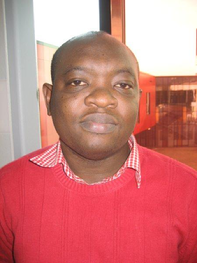Discrete Element Simulation and Experiments: Toward Application for Cohesive Powders
Promotion date: March 14.
Promotor: Prof.dr. Stefan Luding
Assistant Promotor: Dr. Vanessa Magnanimo
| In my research, we couple experiments and particle simulations to link the microscopic properties of particles to their macroscopic response with the final goal of industrial application. The procedure of studying frictionless, frictional and cohesive granular assemblies independent of each other, allows to isolate the main features related to each effect and provides a gateway into the use of discrete element methods to model and predict complex industrial applications involving materials as e.g. cocoa food powder. For frictionless packings, we find that different deformation paths, namely isotropic/uniaxial over-compression or pure shear, slightly increase or reduce the jamming volume fraction below which the packing loses mechanical stability. By calibrating an anisotropy model using isotropic and deviatoric modes, an independent test could be successfully predicted. For frictional packings, we find that uniaxial deformation activates microscopic phenomena not only in the active Cartesian directions, but also at intermediate orientations, with the tilt angle being dependent on friction, and different for stress and fabric. From multi-stress level uniaxial experiments, by comparing two experimental setups and different cohesive materials, we report that while stress relaxation occurs at constant volume, the relative relaxation intensity decreases with increasing stress level - all predicted by a simple theoretical model. Finally, we compare results from experiments and discrete element simulations of a cohesive powder in a simplified canister geometry to reproduce dosing (or dispensing) of powders by a turning coil in industrial applications. Using homogenization tools, we obtain the exact local velocity and density fields in our device, which can help to improve applications. |
Was your research application driven?
In this project there was a strong collaboration with industry, software houses and interdisciplinary fields of academic research. It was a great opportunity being able to have several training sessions, study industrial best practices, use up to date verifying techniques, and have access to industrial knowledge.
Granular products are widespread in daily life. Cohesive powders can give rise to unwanted sticking behavior in different setups. On a more industrial size, silos that mount up to several meters of height can give rise to serious problems like blockage or noise.
In our approach theory is still the underlying basis. We use this basis to try and find added value in which simulations can predict and understand phenomena. This information can later on be used in some well-chosen experiments. Performing these experiments in a clever, well timed way can save lots of time and money, and can speed up innovation processes considerably.
Can you recall some special moments along the way during your PhD project?
Cohesion plays an important role describing blockage phenomena. We found that discrete element method (DEM) simulations can predict this complex behavior quite well.
It is possible to model the role of shapes, sizes and contacts between micro-particles and how they affect macro outcomes. In this way DEM is a powerful tool. I hope industry will gain confidence in using this tool to save lab time and experiment costs. Of course, final full testing and pilot tests will continue to be necessary. Nevertheless, the incorporation of this kind of modeling tools can contribute to product development and can lead to process improvements.
The models themselves will improve even further in the near future, I am convinced. For example taking into account wall friction, creep and aging at contacts are important next steps.
What are your future plans?
My prospects finding a job are good, as all industries use granular materials in some form or another. I found it very challenging to work in an environment where academic research and industrial demands - focusing on costs and increasing productivity - overlap.
Hopefully, I will find this overlap in my future job. I like to stay connected to academic research somehow, as I believe bold ideas, leading to next generation technologies, are most likely to originate from universities.
Did you manage to have some nice articles published?
Articles appeared in Kona Powder and Particle Journal, Particuology, and Physical Review E. Two more articles are in preparation. Also I did write some conference papers, and I performed as a guest speaker on several conferences as well.
Are you a better scientist now as compared to four years ago?
Very much so. My masters work at Magdeburg University gave me the basis and the scientific depth I gained from my research. Mesa+ has greatly improved my scientific standing. Apart from theoretical knowledge and the progression of my simulation and experimental skills, I learned a great deal from collaborating with experts within the projects. Also, I led some projects myself and I accompanied students. All of these experiences added to my skills.
What, in your opinion, is important for Mesa+ to stay successful in future?
I learned a lot from the lecturers Mesa+ invites every week. It broadened my view and contributed to my multidisciplinary attitude of work, as did the intersectorial trainings.
The cross-fertilization between groups will enhance the scientific output even more, I believe. In my research group, collaboration with the Physics of Complex Fluids Group led to some excellent ideas and joint publications. I also think that Mesa+ can benefit from using modeling and simulation tools to understand details not readily accessible in experiments.

